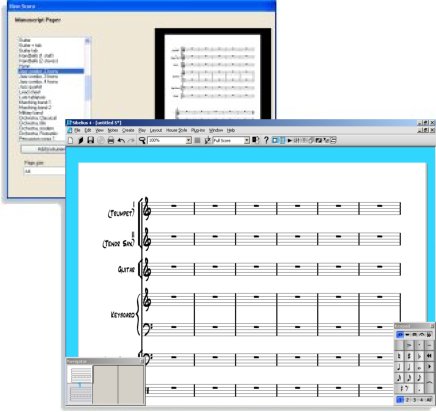

We've been using it since the 15th century!īeing able to read notation is SO important.
#Where is mandolin in sibelius 5 trial#
Tablature cuts through that trial and error and tells a technician where to put their fingers. or even here (if I REAAAAALLY feel like it). Sure, you can read the notation but I can play my E here. When it comes to fretted instruments we have a precarious situation. I love the discussion on this topic! It's one I've discussed with a lot of different people. "Q: How do you get a guitar player to stop playing?Ī joke I was once told by a MUCH older drummer when I sat in with a community jazz band. Some musicians think the ornaments are really part of the melody, particularly in certain folk styles, but the standard practice of writing ornaments does have the advantage of making a distinction between essential melody and the extras. I suppose notation programs have something to do with the practice of writing everything out as if it were part of the melody, but I can add all of those symbols easily on Sibelius, and think it's the same on Finale. Good notation today still uses the traditional symbols for appoggiatura, acciaccatura, mordents, turns, grace notes, etc. The clear detail of the wood is lost in a forest of sixteenth notes. The downside is that we end up with notation that is technically "correct", but is also cluttered, difficult and unhelpful. I suspect that this is because most notation these days is typeset by computer and it's to fiddly to go back later and put in the ornaments. Today the trend is to spell out ornaments directly in linear runs of eighth and sixteenth notes. The ornaments can be added later or not at all, according to taste. A beginner can play the music and ignore the ornaments, concentrating on getting the tune right. These add specific ornamentation to the music, but have the massive advantage of keeping the main musical line clear and uncluttered.

You've probably seen older printed music with smaller notes (appoggiatura and acciaccatura), wavy lines (mordents), sideways S (turns), and so on. I think notation would be improved if we went back a few hundred years!Īt school, I learned of grace notes and ornamentation.


 0 kommentar(er)
0 kommentar(er)
